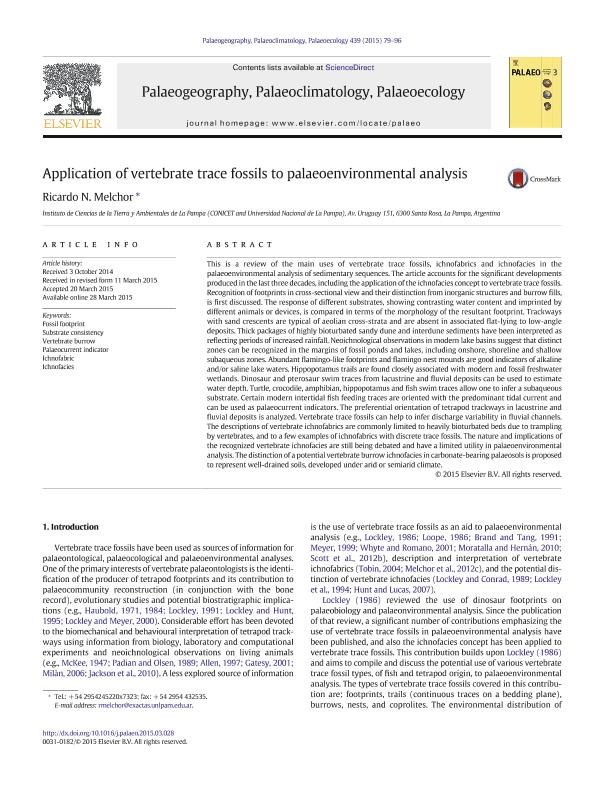Artículo
Application of vertebrate trace fossils to palaeoenvironmental analysis
Fecha de publicación:
12/2015
Editorial:
Elsevier Science
Revista:
Palaeogeography, Palaeoclimatology, Palaeoecology
ISSN:
0031-0182
Idioma:
Inglés
Tipo de recurso:
Artículo publicado
Clasificación temática:
Resumen
This is a review of the main uses of vertebrate trace fossils, ichnofabrics and ichnofacies in the palaeoenvironmental analysis of sedimentary sequences. The article accounts for the significant developments produced in the last three decades, including the application of the ichnofacies concept to vertebrate trace fossils. Recognition of footprints in cross-sectional view and their distinction from inorganic structures and burrow fills, is first discussed. The response of different substrates, showing contrasting water content and imprinted by different animals or devices, is compared in terms of the morphology of the resultant footprint. Trackways with sand crescents are typical of aeolian cross-strata and are absent in associated flat-lying to low-angle deposits. Thick packages of highly bioturbated sandy dune and interdune sediments have been interpreted as reflecting periods of increased rainfall. Neoichnological observations in modern lake basins suggest that distinct zones can be recognized in the margins of fossil ponds and lakes, including onshore, shoreline and shallow subaqueous zones. Abundant flamingo-like footprints and flamingo nest mounds are good indicators of alkaline and/or saline lake waters. Hippopotamus trails are found closely associated with modern and fossil freshwater wetlands. Dinosaur and pterosaur swim traces from lacustrine and fluvial deposits can be used to estimate water depth. Turtle, crocodile, amphibian, hippopotamus and fish swim traces allow one to infer a subaqueous substrate. Certain modern intertidal fish feeding traces are oriented with the predominant tidal current and can be used as palaeocurrent indicators. The preferential orientation of tetrapod trackways in lacustrine and fluvial deposits is analyzed. Vertebrate trace fossils can help to infer discharge variability in fluvial channels. The descriptions of vertebrate ichnofabrics are commonly limited to heavily bioturbated beds due to trampling by vertebrates, and to a few examples of ichnofabrics with discrete trace fossils. The nature and implications of the recognized vertebrate ichnofacies are still being debated and have a limited utility in palaeoenvironmental analysis. The distinction of a potential vertebrate burrow ichnofacies in carbonate-bearing palaeosols is proposed to represent well-drained soils, developed under arid or semiarid climate.
Archivos asociados
Licencia
Identificadores
Colecciones
Articulos(INCITAP)
Articulos de INST.D/CS D/L/TIERRA Y AMBIENTALES D/L/PAMPA
Articulos de INST.D/CS D/L/TIERRA Y AMBIENTALES D/L/PAMPA
Citación
Melchor, Ricardo Nestor; Application of vertebrate trace fossils to palaeoenvironmental analysis; Elsevier Science; Palaeogeography, Palaeoclimatology, Palaeoecology; 439; 12-2015; 79-96
Compartir
Altmétricas




